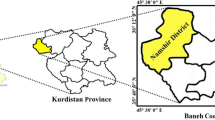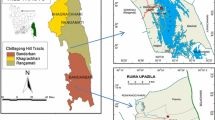Abstract
The Knuckles range of forests has been identified as a unique biological resource in Sri Lanka with much biodiversity. It is also important as a watershed which feeds the Mahaweli reservoir system. Having considered the present hazardous land-use practices such as cardamum production and shifting cultivation, the Knuckles range has been declared a national wilderness area. The Forest Department is in the process of preparing the management plan for the area. There are about 48 villages in the vicinity of the forest. This study attempts to estimate the composition of income in the peripheral communities, ticularly the extraction of non-timber forest products (NTFP) from this range of forests. Data were collected using structured questionnaires from 60 households in three villages in the vicinity of the forest. The rural economy is described using a farming systems approach and the net income contributed by each activity in the farming system was estimated.
Results show that nine components of the farming system use resources from the village and the forest, with at least 47 plant species used by the villagers for different purposes. Cardamum production and shifting cultivation contribute significantly to the total income of the household, but the majority of households in the study depend upon forest resources to supply some portion of their income. Nevertheless, the monetary value of the annual income generated by NTFP is much lower than income from either cardamum production or shifting cultivation. If cardamum production and shifting cultivation are to be restricted under the conservation program, there could be additional pressure put on NTFP. Therefore, we suggest a study of the natural regen-eration capacity of selected NTFP; such information should be used in finalizing the management plan in the Knuckles range of forests.
Similar content being viewed by others
Literature Cited
Balasubramaniam, S. 1988. The major forest formation of Knuckles region. Paper presented at the preliminary workshop for the preparation of a conservation plan for the Knuckles range of forests. University of Peradeniya, Peradeniya, Sri Lanka.
Edussuriya, C. S. 1988. Some physiographical and other related aspects of the Knuckles region. A paper presented at the preliminary workshop on the preparation of a conservation plan for Knuckles range of forests. University of Peradeniya, Peradeniya, Sri Lanka.
Godoy, R., and R. Lubowski. 1992. How much is the forest worth? Guidelines for the economic valuation of non-timber tropical forest products. Current Anthropology 33:423–433.
NARESA (Natural Resources Energy and Science Authority). 1991. Forest resources. Pages 197–213in Natural resources of Sri Lanka—conditions and trends. Natural Resources Energy and Science Authority, Colombo, Sri Lanka.
Perera, M. M. D. 1988. Wildlife in the Knuckles Range—introduction and geographical situation. Paper presented at the preliminary workshop on the preparation of a conservation plan for Knuckles Range of forests. University of Peradeniya, Peradeniya, Sri Lanka.
Plucknett, D. L., J. L. Dillon, and G. J. Vallaeys. 1987. Proceedings of the workshop on farming systems research. International Crops Research Institute for the Semi-Arid Tropics, Patancheru, Andra Pradesh, India.
Ruthenberg, H. 1980. Fanning systems in the tropics. Oxford Scientific Publications, Oxford.
Shaner, W. W., P. F. Phillips, and W. R. Schemehl. 1981. Fanning systems research and development: guideline for developing countries. Westview Press, Boulder, CO.
Author information
Authors and Affiliations
Rights and permissions
About this article
Cite this article
Gunatilake, H.M., Senaratne, D.M.A.H. & Abeygunawardena, P. Role of non-timber forest products in the economy of peripheral communities of knuckles national wilderness area of Sri Lanka: A farming systems approach. Econ Bot 47, 275–281 (1993). https://doi.org/10.1007/BF02862294
Received:
Accepted:
Issue Date:
DOI: https://doi.org/10.1007/BF02862294




